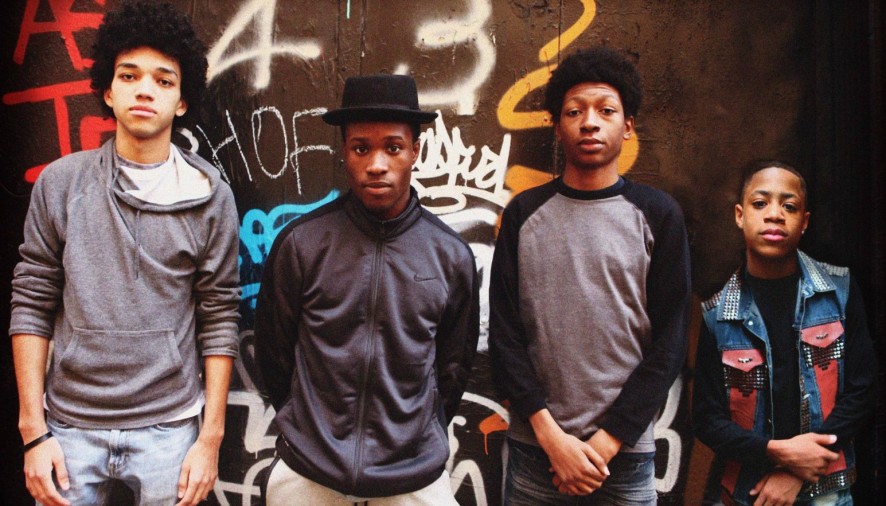Created by Baz Luhrmann, music co-produced by East Coast hip-hop golden child, Nas, and costing $120 million to produce, The Get Down is a melting pot with all the right ingredients to rival Stranger Things to the title of Netflix’s best original series of 2016.
Like Stranger Things, The Get Down shines due to its evocation of a certain period, a stellar cast of young newcomers and a soundtrack to rival the programme itself. However The Get Down takes it a step further. The series is a conscious return to the moment where two eras collide. With disco at death’s door, a new beat was pulsing through neglected neighbourhoods and in the hearts of disgruntled and disaffected black youths, and thus, hip-hop was born.
“Luhrmann finds the beauty amongst this decay, visually as well as sonically”
Despite The Get Down appearing typically Baz in its aesthetics; ethereal colours and an element of magical realism, this is no romanticised depiction of the late 1970s South Bronx. The spirit and vibrancy of this new music is set against the backdrop of decaying buildings. With characters explaining that gangs are paid to burn down buildings so the owners can claim the insurance, and local politicians outlining their plans to destroy hospitals in impoverished areas, the series does not shy away from the South Bronx’s raw and distressing history.
Fusing magic-realism with old Hollywood cinema and kung-fu film, The Get Down shines from the way it looks at one moment in history through a series of cinematic lenses. In one scene, Mylene’s uncle drives the young aspiring disco star around in his car, a scene which is quite obviously edited to look like it’s taking place on an old green screen, suggesting Mylene as a symbol for the outdated and dying genre of disco. On the other hand, scenes featuring Shaolin Fantastic often seem like they are extracted from a kung-fu film, reiterating his grasshopper-esque relationship to Grandmaster Flash. This supernatural style also acts as a nod to kung-fu film which had a resurgence during the late 70s, with these two opposing worlds seeming to go hand-in-hand.
Although Luhrmann finds the beauty amongst this decay, visually as well as sonically. As ever, his use of colour is poignant and ethereal, though this is for more than visual pleasure. The colour red acts as a recurring character in The Get Down, most significantly in conjunction the character of Shaolin Fantastic, the group’s DJ and “conductor”.
Shaolin is known for the immaculate red Pumas he sports, which the audience and characters see long before the rest of his body. Additionally he’s gifted a Cadillac which is lined with red interiors as well as a chilling secret, and the apartment containing his life’s collection of records is a red haven, eventually burnt to the ground.
In contrast, Ezekiel’s love interest, aspiring disco star Mylene is constantly draped in white, suggesting that she is the angel to Shaolin’s devil on Ezekiel’s shoulder. King of aesthetics, Luhrmann uses colour and costume like no one else. In The Get Down, the battle of hip-hop versus disco comes to signify a much greater struggle, the battle to ‘keep one foot in each world’.
However, it’s the music that is at the heart of this epic, and anyone who was lucky enough to see Grandmaster Flash at Good Life in May this year can relive his majesty as the characters are overwhelmed by it in the series.
With 70s superstars such as Earth, Wind and Fire, Kurtis Blow, and The Sugarhill Gang featuring on the soundtrack, as well as original music written by Nas for protagonist Ezekiel, the music of The Get Down is what inspires this series as an authentic and touching journey through a certain period, rather than a tacky recreation.
Entertaining as it is educational, The Get Down sets out to inform audiences of the roots of the music that inspires them today and it’s this consciousness that makes the series brilliant. In the series, Grandmaster Flash declares that ‘the DJ exists in two time zones’, as does The Get Down, every aspect of it transcending the era it aims to recreate; style, music and social issues.
“The Get Down is a homage to those willing to break the mould, doing the same in its style, and encouraging its viewers to do so to”
A stand out example is Jaden Smith’s scene taking place in a vibrant and subterranean world where ‘free people [are] free’ in the final episode. His character embraces bisexual experiences, surrounded by drag queens, a moment made even more poignant through casting Smith as he has recently been part of female fashion campaigns, encouraging gender fluidity.
Appealing to the dancefloor warriors who want to sparkle in the flamboyant, underground scene, as well as those looking to make an impact on the face of the city, The Get Down is a homage to those willing to break the mould, doing the same in its style, and encouraging its viewers to do so to. Its evocation of 1977 will be just as relevant when the final six episodes are released in 2017.
The 70s and the 80s now covered, maybe Netflix will be looking to the future for their next project of TV-world domination?
Jodie Yates
Image: www.collider.com

